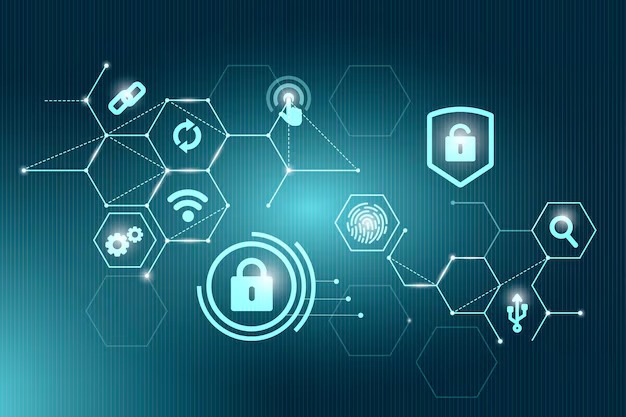
In the digital era, the need for cybersecurity has become omnipotent. The safeguarding of confidential data and networks is essential for anybody, from a single person to a global company. But what are cybersecurity's main objectives? The purpose of this blog is to examine these essential objectives, and provide justification for enrollment in a Cyber Security Course Onlineor Cyber Security Training Course.
The CIA Triad: The Foundation of Cybersecurity:Everyone within the CIAT (confidentiality, integrity, and availability) is to be made aware of this principle. This paper explains the three key objectives that every security system strives to achieve:
Confidentiality: Make sure that only people with permission can access the information. This covers keeping secret information from disclosure, interception, or using it without authorization.
Integrity: Preserving the correctness and entirety of information. Preventing unauthorized changes, tampering, or doing harm to data is what it means.
Availability: Assurance that there is access to both systems and the information contained within them at the required time. This is done by preventing interruptions, avoiding periods of inactivity, or intervening in cases of denial of service attacks.
These three building blocks depend on each other and support one another. If one pillar is damaged, then two other parts can be put in jeopardy too. For example, if someone gains access to confidential data files (violating confidentiality), it might subsequently end up causing corruption (violating integrity) or even unavailability due to system downtime (violating availability).
Moving Past the CIA Triad:Beyond the CIA Triad aiming for other things than only cyber security goals CIA Triad Security objectives as set in the CIA Triad include other things:
Accountability: Who is responsible for data as well as system actions? Implementation involves strong access controls, audit trails, and user-calling service technology.
Authentication: Verifying users from calling into question what they have done or been repudiated through the use of digital signatures or encrypted keys.
Non-Repudiation: Prevent users from calling into question what they have done or been involved in during a transaction. It is to achieve one of its most important pillars: non-repudiation through the use of digital signatures or encrypted keys.
Privacy: Prohibiting unauthorized or inappropriate usage, disclosure, or destruction of individual information. Compliance with GDPR or CCPA is required for such efforts.
Compliance: following rules and regulations that apply to specific industries, hence meeting legal obligations and contract obligations as well.
Resilience: Given the immediate or transient nature of most attacks, it should be possible for firms to recover quickly while still branded in their reputation. Therefore, disaster management and business recovery plans need to be firmer than a wall.
In order to achieve these goals in cybersecurity, it is important to have a qualified and experienced workforce. Cybersecurity courses and cybersecurity training programs available online are of great assistance in this regard. The following are some of the skills that such individuals will acquire:
Recognize probable threats along with weaknesses.
Application of preventive action plans and protective strategies.
Methods of reacting to computer-related offenders as well as avenging attacks
Continuous tracking of the most current developments concerning cyber crime prevention techniques and globally accepted standards in cyber protection.
By investing in cybersecurity training, organizations can build a strong cybersecurity culture and better protect their valuable assets.
It is essential to understand that cybersecurity is a dynamic field. The threat landscape is constantly changing; new threats emerge regularly. Hence, continuous learning and adaptation remain important. Online cyber security training provides flexibility and access to professionals who can continue updating without interfering with their work.
Understanding Cyber Threats and Their Solutions:As technology advances quickly these days, it is important for people and organizations to keep themselves updated about these advancements in order to avoid being vulnerable to them. In this section, we will highlight the most common categories of cyber vulnerabilities as well as possible approaches toward minimizing their negative effects.
Some popular categories of cyber vulnerabilities:Malware: This is an umbrella term used to refer to all forms of programs that are intended to harm computer systems. Categories Include:
Viruses
Worms
Trojan Horses
Spyware
Adware
Phishing: Phishing is social engineering attacks targeting users deception, which prompts them to divulge sensitive information by means of emails or websites that are not genuine.
Denial of Service (DoS) Effects and Distributed Denial of Services (DDoS): Obstructuion with such high volume thus rendering it unapproachable by genuine individuals towards it.
Man in the Middle (MitM) Attacks: Intercept data between two people.
SQL Injection: Take advantage of unknowledgeable weaknesses existing in softwar.
Insider Threats: Malevolent conduct from workers or outside workers.
Strong Passwords: Create intricate, distinct passwords for every account and activate multi-factor authentication.
Software Updates: Update operating systems and applications periodically with the most recent patches.
Anti-Virus and Anti-Malware Software: Secure your device with a reliable antivirus software and periodically renew it.
Firewall: Protect your network from unauthorized access.
Employee Training: Train employees to identify cyber threats, as well as general best practices.
Data Backups: Ransomware attacks notwithstanding, often save vital information.
Incident Response Plan: Create procedures for responding to and recovering from cyber incidents.
Network Segmentation: Scrutinize limited-access divisions in order to restrict a breach’s consequences.
Intrusion Detection and Prevention Systems (IDPS): Keep vigil over unusual internet traffic.
Encryption: Tidily padlock all sensitive materials—for use without tampering at both present stage storage freshness and future delivery.
Vulnerability Management: Address system vulnerabilities quickly by identifying and resolving them right away.
Cybersecurity Insurance: Consider acquiring insurance policies that cover possible losses.
The goals of cybersecurity and their multifaceted nature involve protecting the confidentiality, integrity, availability, and other major areas of information systems. As a structured approach, the CIA Triad is merely part of it; full consideration should also include accountability, authentication, non-repudiation, privacy, compliance, and resilience.
An understanding of such goals together with financial resources spent towards cyber security courses or cyber security training online can be instrumental to individuals as well as organizations that want to master the craft of counteracting against cyber threats and develop a secure digital future.